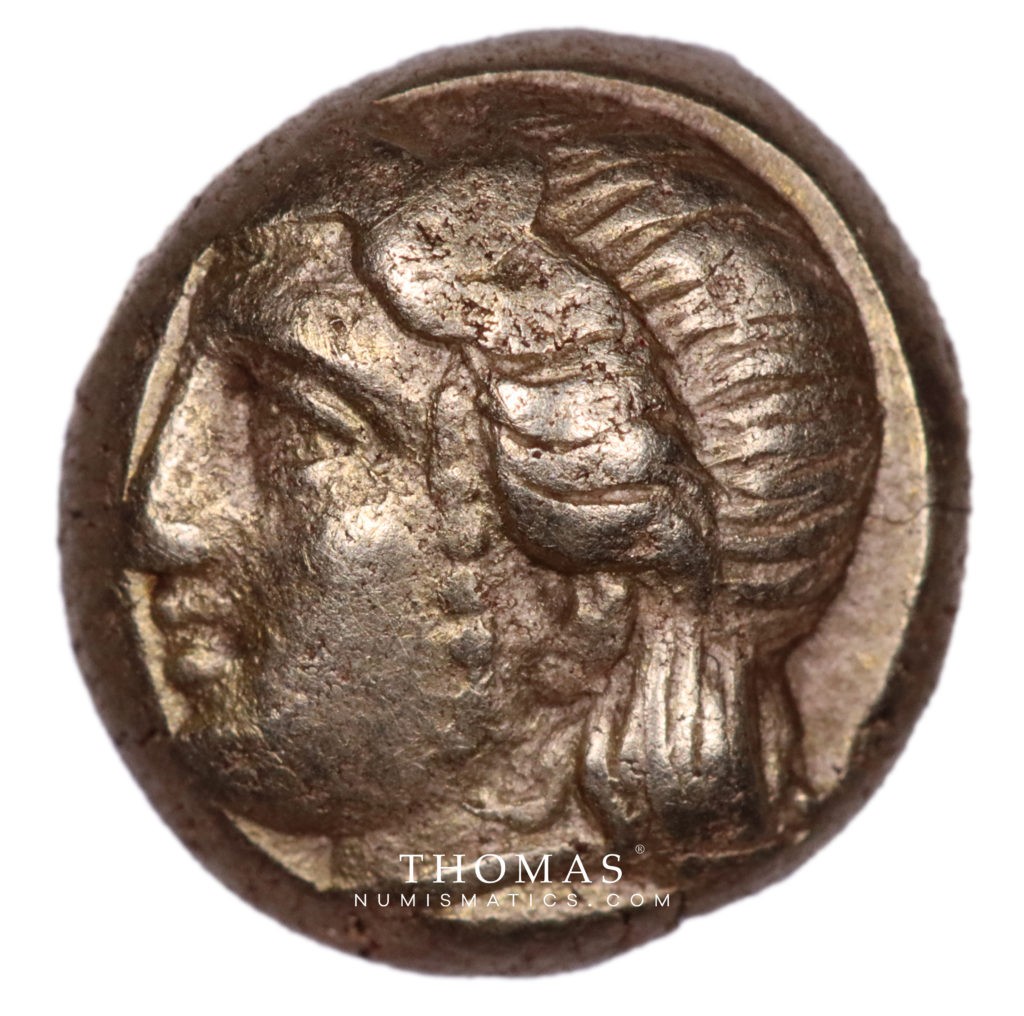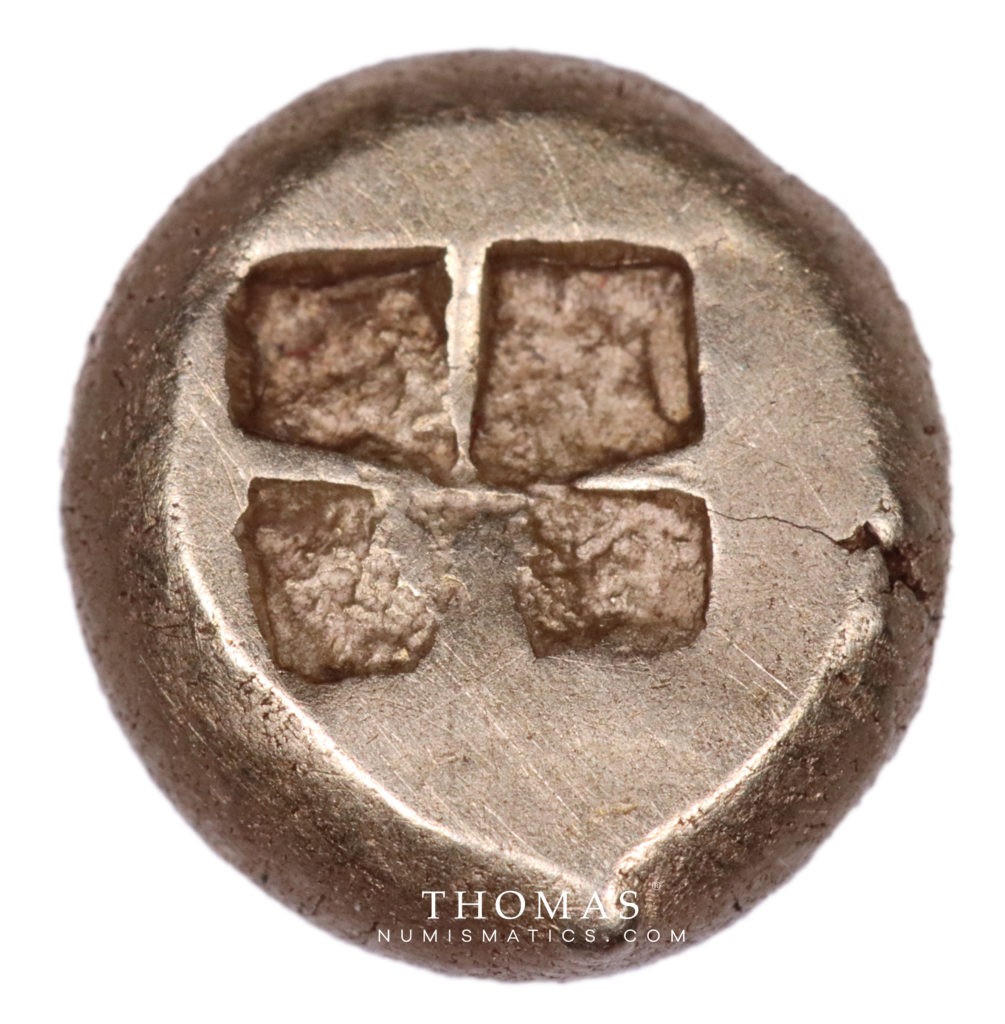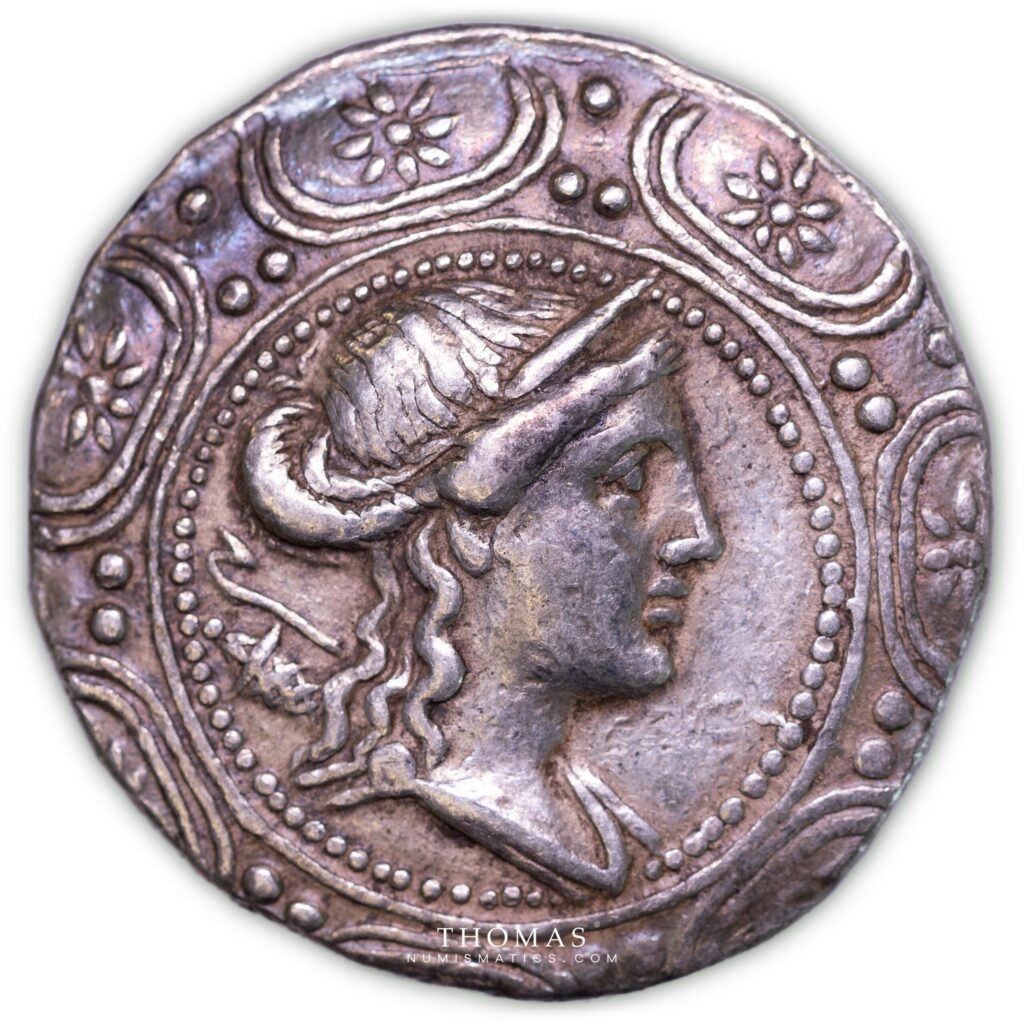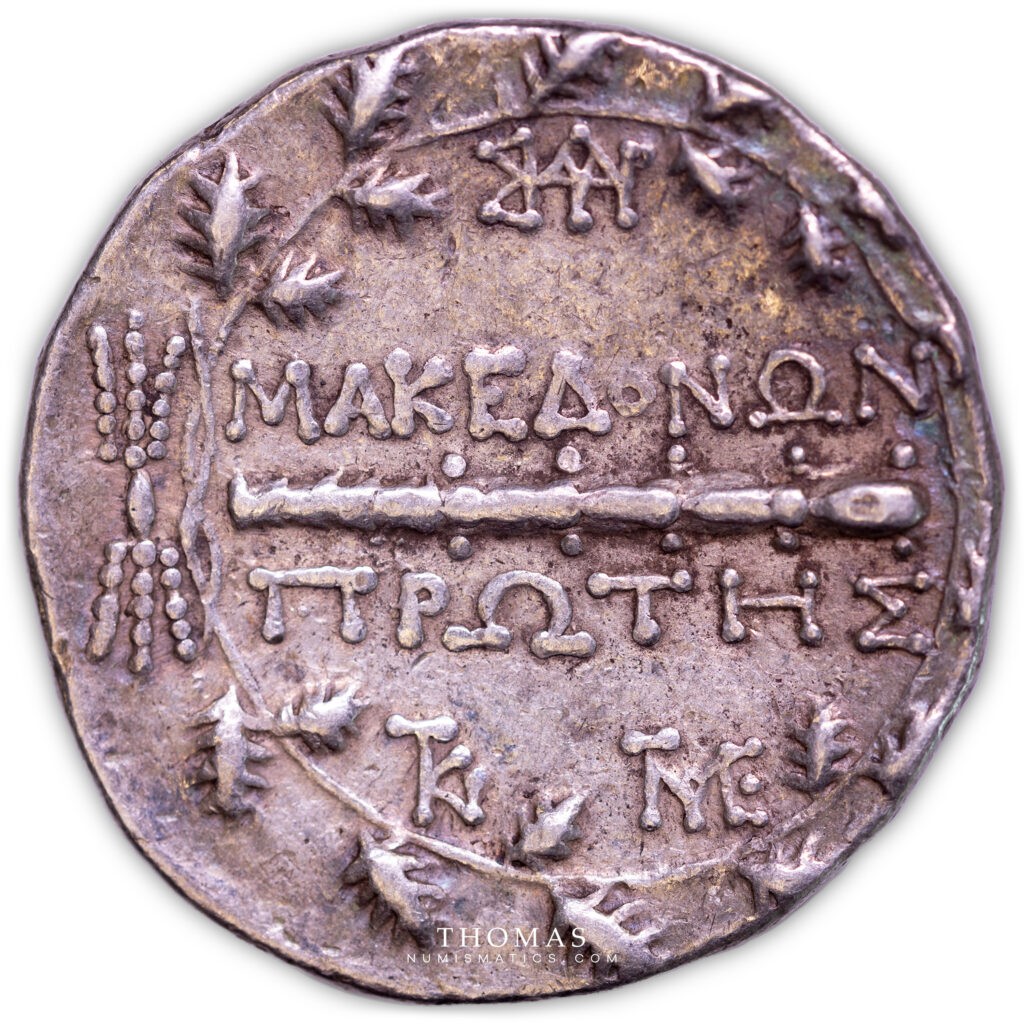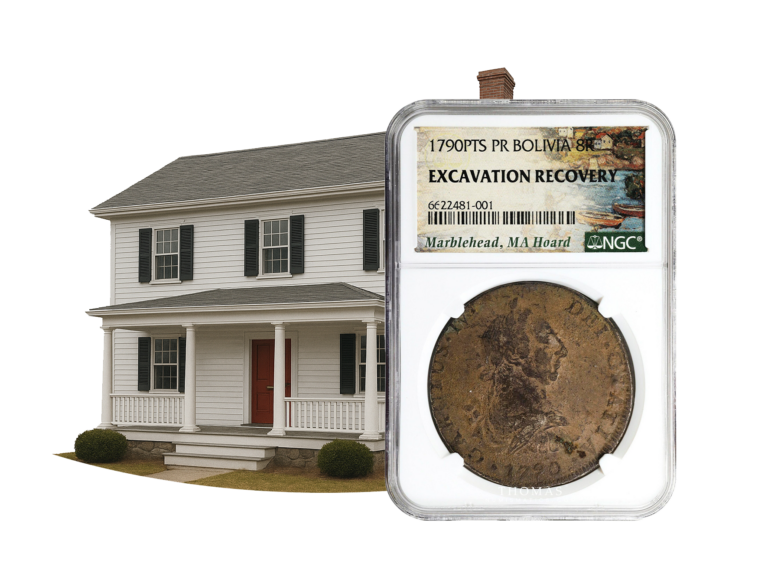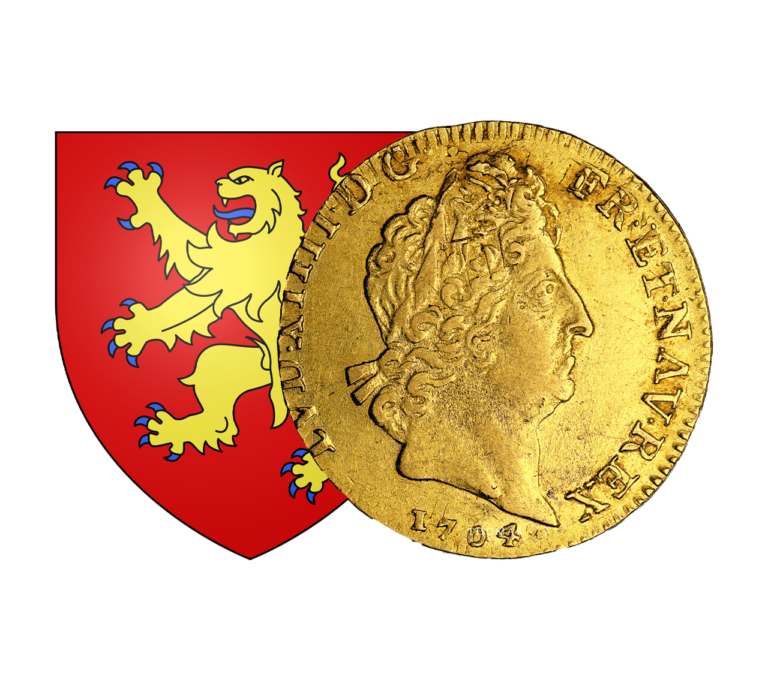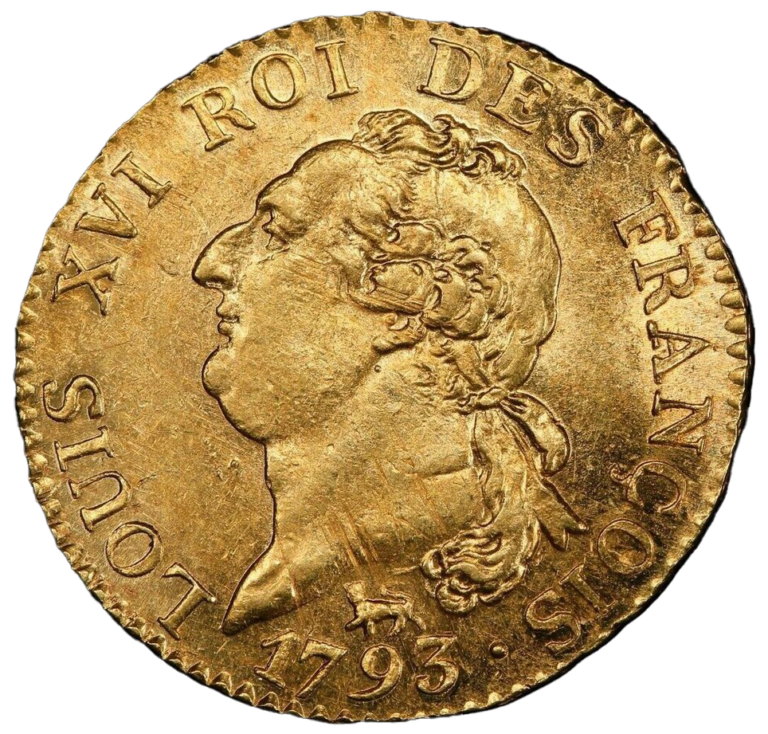
Discover all the news and articles from TNUMIS Magazine exclusively
Ancient Greek currencies: a whole history
Ancient Greek currencies are mythical. They are the oldest coins in the world and bear witness to a great civilization. Collecting them is truly a journey through time. And this is exactly what we will be doing together: immersing ourselves in the numismatics of ancient Greece, several thousand years old ago. Four main periods have been defined according to history and styles: Archaic, Classical, Hellenistic and Roman.
The birth of the ancient Greek currency
No one agrees on the precise birthplace of Greek money. More likely born in the cities of Asia Minor, in present-day Turkey, the currency would have been invented in the seventh century BC. We are talking about the first coins minted and signed in the Western world. According to the historian Herodotus, the Lydians struck the first coins. Croesus, the king of Lydia, is thus associated with the first ancient coins and we speak of “creseids” to designate them. He extracted gold from the Turkish river called the Pactolus.
If the attribution of the creation of the oldest coins to Lydia remains discussed, the invention is quickly spread in continental Greece, in the center (Aegina, Athens and Corinth), in the north and on the island of Siphnos.
The archaic period
The first archaic Greek coins are made of electrum, an alloy of gold and silver. The composition of electrum varied too much from one coin to another, and minters quickly abandoned it in favor of gold, silver and bronze alone.
The metal is heated, poured into a mold called a wedge, then struck with a hammer. This is the reason why the coins are so far from being uniform. Then, the technique is refined. Coins are struck on the obverse with a symbol (most often an animal) and on the reverse with a punch. The drachma became the unit of measurement and was divided into multiples (didrachma, tetradrachma, decadrachma), obols (the tetrobolus, diobolus, etc.) and chalks (the double chalks).
Each city strikes its own monetary series with its animal as an emblem: the owl of Athens, the tortoise of Aegina, the bee of Ephesus, the Pegasus of Corinth, the seal of Phocaea, etc. This is the Archaic period, which extends from 600 BC to the Median Wars in 480 BC.
The cities compete to produce the most beautiful currency that will be seen beyond their borders. Two geographical characteristics accentuate this: the mountainous relief of Greece and the omnipresence of the sea. The numismatics of Ancient Greece is therefore the image of the empire. The territory is divided into multiple city-states, isolated from each other, but the sea offers a wide economic, commercial and cultural openness. The Greek coinage is thus constituted of a collection of autonomous currencies.
The silver drachma of Aegina is the first example of a currency that became a monetary standard in commercial exchanges. Then, the city of Athens became more and more powerful and the silver tetradrachm with the owl became the most famous coin.
The classical period
The classical period extends from 480 BC and ends with Alexander the Great, in 330 BC. The techniques and know-how are then perfected. Gold and silver coins take over, being of exceptional quality. The drawings on the obverse and reverse sides are multiplying and the animals also make way for human characters: tutelary deities of cities and heroes. Coins are also adorned with inscriptions, primarily being the place of their minting and their origin.
The Hellenistic period
The Hellenistic period extends from 330 BC and ends in the first century 100 BC, at the time of the Roman conquest. At the time, the Greek culture spread in a large part of the world. The Greek colonies settled throughout Asia and Europe, spreading their currency. The novelty of this period consists in the evolution of the representations. Henceforth, it is the portraits and the names of the sovereigns that are struck on the coins. They are most often associated with deities to reinforce the power of the dynasty. The tetradrachm with the effigy of Alexander the Great becomes the most common currency. It is sometimes accompanied by the goddess Athena, sometimes by Zeus and Heracles. The production workshops also affix their label. The two largest are based in Macedonia, the stronghold of Alexander the Great: in Amphiopolis and Pella. On his death, his successors continue to strike alexanders, as well as philippes, the currency of his father.
The Roman period
The so-called Roman era begins with the domination of Rome. From that time on, Greek cities continued to produce their own coins until the third century A.D. They are called Greek Provincial coins and contain many varieties of coins. Some rulers continued to use the portrait of Alexander the Great to legitimize their power. Shortly, the model disappears. The last Greek coins were minted under the Roman emperor Gallien.
Discover regularly in our shop ancient Greek coins.
Sources :
Musée de l’histoire
Sacra Moneta
Anticopedie
Wikipedia
